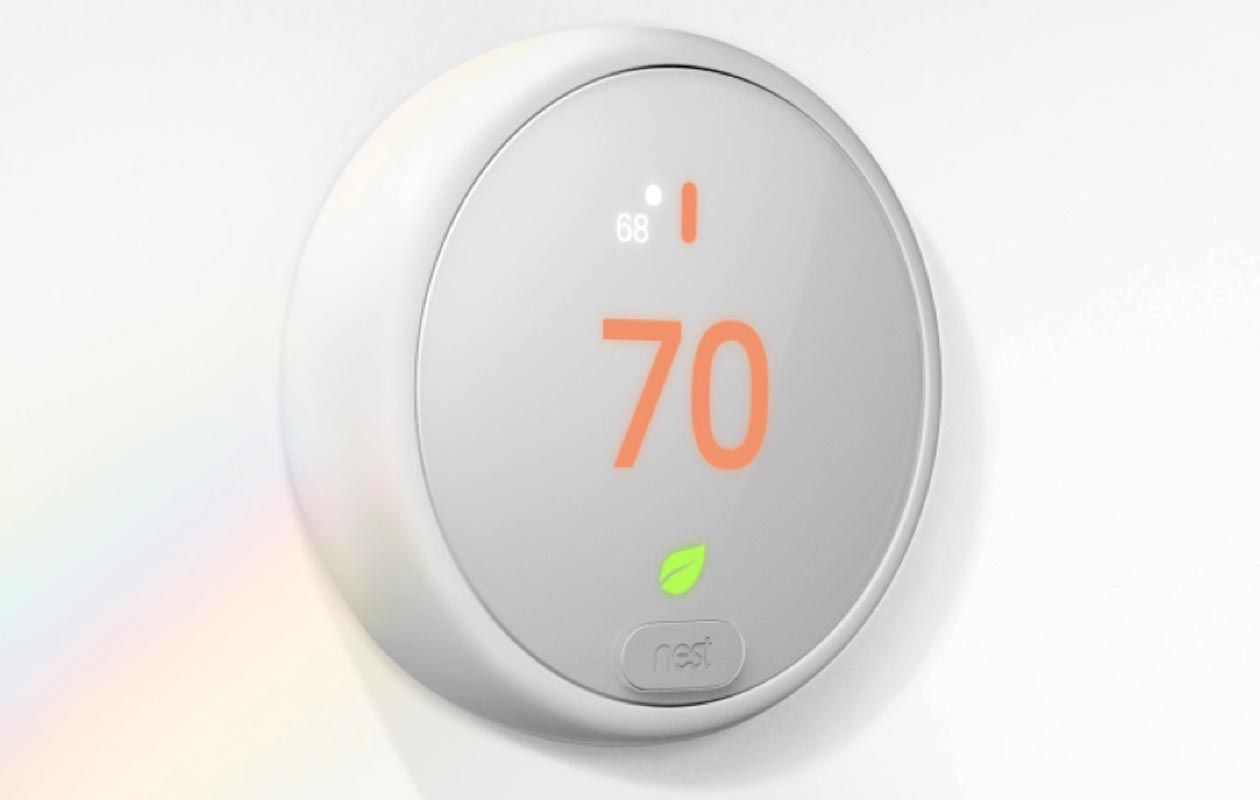Can a NEST Smart Thermostat Save You Money?
A NEST smart thermostat is one of the best smart thermostats, enabling you to control your heating and cooling system by phone or voice and lower your utility bills. On the downside, you can’t automatically set schedules.


A scorching summer is underway, with 2024 ramping up to be the hottest year on record. As you scramble to find ways to temper rising costs, a NEST smart thermostat and other smart thermostats can be a good way to save you money on your electric bills.
Residential customers' electricity bills are estimated to average $173 per month this summer, up from $168 last year, according to the most-recent estimates from the Energy Information Administration.
Data from the Environmental Protection Agency (EPA) supports the fact that smart thermostats meeting Energy Star criteria save users an average of 8% on their utility bills. That can equal about $50 annually, although savings may be greater in locations with frigid winter temperatures or hot summers. But, research also shows that just slightly more than 30 million homes in the U.S. had smart thermostats in 2020.

Sign up for Kiplinger’s Free E-Newsletters
Profit and prosper with the best of expert advice on investing, taxes, retirement, personal finance and more - straight to your e-mail.
Profit and prosper with the best of expert advice - straight to your e-mail.
Budget-friendly Google NEST thermostats are WiFi-enabled thermostats that require programming when set up for the first time. For many people, that’s just fine, as they would rather adjust temperatures themselves. That’s not to say that you can’t do some basic automating with the NEST thermostat. Just a few taps on your smartphone and you can easily program everything through the Google Home app.
What are smart thermostats?
The technology behind home thermostats has come a long way. From manual controls to programmable options, smart thermostats can save money, add convenience and keep you comfortable. They offer a variety of features not found in manual thermostats, such as Wi-Fi connectivity, data on energy use and maintenance alerts. Some smart thermostats even provide the ability to learn your family’s heating and cooling needs.
How do smart thermostats work?
Smart thermostats are hardwired into your home’s HVAC system, just like traditional thermostats. However, they also need a Wi-Fi connection to function remotely with an app or your phone. Fortunately, if your Wi-Fi goes out, you can still program your thermostat manually.
Through the app, you can typically schedule when your heating or cooling turns on. You can adjust the temperature in your home no matter where you are, so even when away, you can come home to cozy or cool temps. Smart thermostats work with most heating and cooling setups, even those connected to radiators.
Many smart thermostats have a touch or digital screen that allows you to control temperature. You can’t control your home’s humidity, but you can monitor it and set an alarm if it changes. You can also set your smart thermostat to run during specific times of day through geofencing — the ability to create a virtual fence or imaginary boundary on a map — so that when you leave the house, you can adjust the home’s temperature for maximum efficiency and energy usage.
Can a smart thermostat save you money?
It’s no secret that smart thermostats can cost more than manual thermostats. Most are easily installed by homeowners, while some may require professional installation, adding to your costs. However, upgrading to a smart thermostat can optimize your HVAC systems, reducing energy waste and maximizing savings — about 8% on your heating and cooling costs per year.
A study by NEST found that NEST customers saved an average of 10% to 12% on heating costs and 15% on air conditioning costs, or about $131 to $145 a year. Of course, actual savings can vary from one home to the next and are based on your family’s preferences and energy costs in your area.
On the flipside, the retail price of a smart thermostat is between $120 and $250, not including installation, while a mechanical thermostat may only cost between $15 and $50. At $130, the Google NEST Thermostat is one of the most reasonably priced smart thermostats on the market.
What are the upsides of smart thermostats?
While smart thermostats are efficient and offer cost-savings, there are a few downsides to consider also, such as possible security issues and upfront costs. Here are the upsides:
Energy efficient — Smart thermostats offer control over your heating and cooling systems. You can schedule and track energy use and offer the ability to control your home temperature from your smartphone or other smart device to create customized heating and cooling schedules. That way, your system only runs when needed, which equals energy savings.
Convenience — Smart thermostats can be controlled by a smart device, which is probably one of their best features. Many smart thermostats also learn your routines, alert you when the system needs maintenance, and track outdoor weather.
Cost-efficient — Smart thermostats can save customers an average of 8% on HVAC costs, while some manufacturers boast even higher savings. The cost savings will vary depending on location, climate and comfort levels.
What are the downsides of smart thermostats?
On the downside, smart thermostats have higher installation costs and certain security vulnerabilities. Here are the downsides:
Upfront cost — Smart thermostats are generally more expensive to install than manual and mechanical thermostats, and those with specialized capabilities can cost significantly more. If you’re not a DIYer, add installation by a professional to your upfront costs.
Security vulnerabilities — Smart thermostats can present a gateway for hackers and malicious intruders to access your internet network. Regular software updates can limit access, but the threat still exists.
Tech-savvy barriers — Although smart thermostats are generally easy to install, homeowners must be reasonably tech-savvy to get the most out of them. If you’re not particularly tech-savvy and web apps aren’t your strong suit, the headaches these devices can cause may outweigh the benefits. Also, you may have to overcome a learning curve if you don't understand HVAC systems.
Notable features of the NEST thermostat
- Programming via an app. You can program everything on your smartphone in the Google Home app.
- Presence sensing. The NEST Thermostat uses a built-in motion sensor, touch controls, and your smartphone’s location data via a schedule you program to know when you leave your home.
- Voice control. The NEST thermostat also works with Amazon Alexa and the Google Assistant for voice control.
- Ease of operation. The Google Nest Thermostat is also very easy to manually operate and control.
- Low price tag. The NEST thermostat offers convenience without a high price tag.
Related Content
Get Kiplinger Today newsletter — free
Profit and prosper with the best of Kiplinger's advice on investing, taxes, retirement, personal finance and much more. Delivered daily. Enter your email in the box and click Sign Me Up.

For the past 18+ years, Kathryn has highlighted the humanity in personal finance by shaping stories that identify the opportunities and obstacles in managing a person's finances. All the same, she’ll jump on other equally important topics if needed. Kathryn graduated with a degree in Journalism and lives in Duluth, Minnesota. She joined Kiplinger in 2023 as a contributor.
-
 Stock Market Today: Trump Retreats, Markets Rejoice
Stock Market Today: Trump Retreats, Markets RejoiceStocks rally, yields soften, the dollar rises, and even beaten-down names enjoy the wages of potential trade peace.
By David Dittman
-
 In Trump’s Economy Should 401(k) Savers 'Set It and Forget It?'
In Trump’s Economy Should 401(k) Savers 'Set It and Forget It?'It’s hard to bury your head in the sand when the markets are volatile. Here’s when it makes sense and when it doesn’t.
By Donna Fuscaldo
-
 Bouncing Back: New Tunes for Millennials Trying to Make It
Bouncing Back: New Tunes for Millennials Trying to Make ItAdele's mournful melodies kick off this generation's financial playlist, but with the right plan, Millennials can finish strong.
By Alvina Lo
-
 What Are AI Agents and What Can They Do for You?
What Are AI Agents and What Can They Do for You?AI agents promise to be the next big thing in artificial intelligence, but what exactly do they do?
By Tom Taulli
-
 Should You Buy an iPhone Now Before Tariffs Hit?
Should You Buy an iPhone Now Before Tariffs Hit?Looming tariffs can make an iPhone purchase seem urgent. Here's what to do if you need another phone but want to save money.
By Laura Gariepy
-
 Here's When a Lack of Credit Card Debt Can Cause You Problems
Here's When a Lack of Credit Card Debt Can Cause You ProblemsUsually, getting a new credit card can be difficult if you have too much card debt, but this bank customer ran into an issue because he had no debt at all.
By H. Dennis Beaver, Esq.
-
 Reminder: The Basics of Using HSA Funds
Reminder: The Basics of Using HSA FundsHealth savings accounts (HSAs)can help you cover out-of-pocket medical costs. Just make sure you understand the rules and keep records of qualifying expenses.
By Ella Vincent
-
 A Checklist for High-Net-Worth Individuals: How to Protect and Grow Your Wealth
A Checklist for High-Net-Worth Individuals: How to Protect and Grow Your WealthA strategic guide to managing, preserving, and expanding your wealth for long-term financial security.
By Dori Zinn
-
 Earn a 50% Discount to The Cultivist With Capital One Venture X
Earn a 50% Discount to The Cultivist With Capital One Venture XTour some of the world's top art museums for less when you use your Capital One Venture X card to score a 50% discount to The Cultivist.
By Sean Jackson
-
 Going to College? How to Navigate the Financial Planning
Going to College? How to Navigate the Financial PlanningCollege decisions this year seem even more complex than usual, including determining whether a school is a 'financial fit.' Here's how to find your way.
By Chris Ebeling